March 24, 2022
55 Sales Prospecting Questions to Get Your Prospects Talking

- What are close-ended vs open-ended sales prospecting questions?
- Why should you ask open-ended sales prospecting questions?
- 55 Sales prospecting questions to help you book more meetings
- Sales prospecting questions best practices
- No, you hang up
Quick poll:
💀 Cold calling is deader than the Dodo.
💪 Cold calling is alive and kicking.
🧟 If cold calling is dead, I need a badge that says “Zombie Team Leader” cause my sales reps are still smiling and dialing like there’s no tomorrow.
Cold calling is, of course, far from dead, but it certainly ain’t getting any easier. Nobody likes being interrupted at the best of times, and today’s prospects are so overwhelmed that all they want is to hang up and get back to their to-do list asap.
Ask the wrong questions and they’ll shut the conversation down faster than you can say “Can I interest you in a demo?”
Keeping them on the line long enough to share your vision of the bright future that awaits them (and, more importantly, book the next meeting) requires asking open-ended sales prospecting questions to keep the conversation going. And unless you possess the conversational skills of David Letterman, you’ll need to have a few prepared in advance.
We checked out what leading sales influencers are saying about cold calling, and the techniques they use to get prospects to open up
What are close-ended vs open-ended sales prospecting questions?
Closed-ended sales questions can be answered with “yes/no” or a very short answer. Open-ended sales prospecting questions require the prospect to give a longer, more considered answer.
Asking open-ended sales questions is a sales prospecting technique designed to get prospects talking and keep the conversation going so sales reps can achieve their call objectives.
Here are a few examples of what that looks like:
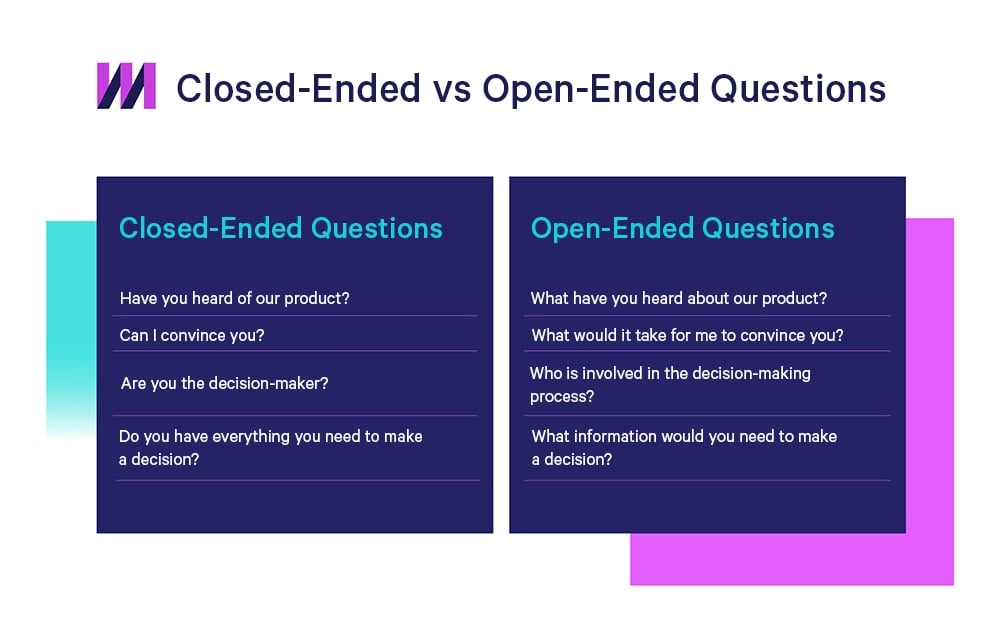
Why should you ask open-ended sales prospecting questions?
You should ask open-ended sales prospecting questions because it’s the best way to find prospects who could be a good fit for your solution, which means they have a problem you can solve. As well as getting the prospect to open up so you can gather information and divine pain points, it shows you’re genuinely interested in helping them and helps build rapport and the trust required for successful selling.
By contrast, rattling off a series of closed-ended questions doesn’t make for an interesting two-way sales conversation, and can make potential customers feel like they're being interrogated.
Ask open-ended questions to try to find where your solution can help, whether it's saving time, money, labor, etc. Your first open-ended questions shouldn’t be too direct, or focused on booking the next meeting. The aim is to get prospects to open up and provide insights you can use to tailor future touches.
Asking good questions also forces potential customers to think differently, which can be helpful for overcoming roadblocks like “We don’t need your solution” (read, “How can I get this SDR off my back and off the line fast?”) Challenging statements like this with open-ended questions can help keep your foot in the door long enough to work on changing their minds.
55 Sales prospecting questions to help you book more meetings
These open-ended B2B sales prospecting questions will cover you from picking up the phone through qualifying and discovery to placing prospects in the pipe.
Openers
Sales calls usually start with the salesperson presenting themself and saying why they’re calling. It’s crucial to get this right so prospects don’t hang up immediately.
1. I’ll be upfront, this is a cold call. It’s up to you: you can either hang up now or let me have 30 seconds and then decide?
This honest approach is risky as some people will just hang up, but it does score high for honesty and directness. If you survive the first few seconds, you should have a good chance of having a conversation.
2. Hey [prospect’s first name], [your first name] calling from [your company]. Who’s in charge of [prospect’s responsibility/area you’re targeting]?
At first glance, this opener seems like it’d get you a brusque “That’s me, jerk” (which you should know from your research). Instead, though, it flatters them and gets them talking.
3. Hi [prospect name], this is [your name] from [your company]. We [how you help]. Do you have 27 seconds for me to tell you about it?
Ok, it’s not a question, but the “27 seconds” pattern interrupt (“Huh? Most people ask for 30 seconds”) helps avoid the knee-jerk “no” reaction.
4. What do you know about [your company/product/service]?
A better approach than jumping down their throats with your pitch.
5. What would it take for you to hear me out?
Ask this if they’re unwilling to give you the time of day. At worst, it’ll keep the conversation going a bit longer. At best, they’ll come up with something you can use to tailor future approaches.
6. I noticed you downloaded our [lead magnet]. What motivated you to check that out?
A good question to ask inbound leads to reveal their pain and needs.
7. How can I help you get the most out of it? (ditto)
Objection handling
If you survived the first few seconds, the next dragon you’re likely to face is The Objection.
We already use [your competitor] / I'm locked into a contract with [your competitor]
8. That’s fine / [your competitor] is great. How’s that working out for you?
No matter how great your competitor is, there will be something they don’t like about it, so this pattern-interrupt question from Justin Michael should get them talking about any issues, and give you clues as to how to position your solution.
9. Not a problem. What if you plugged us in alongside [your competitor] to turbocharge your [prospect’s task] / multiply the effectiveness of your [current solution/stack/processes]?
Bet nobody ever suggested that before!
10. We do integrate with [competitor / non-directly competing product/service]. When our other customers tell us about that, though, they say the experience [challenge/problem]. Is that what you're facing with them? / How are they handling that?
11. I understand. What do you like most about it, just so I can be better informed?
12. That’s great, is there anything additional you’d like [competitor solution] to do?Ideally, something your solution does that theirs doesn’t.
13. When does your contract expire?
This is crucial to know because timing is everything. Find this out and you can drop them into a customized re-invigoration sequence in Mixmax to check back in further down the line. Remember, your goal on a cold sales call isn’t to sell, but start building a relationship by being genuinely interested in how you could help and it’s always worth taking the time to listen.
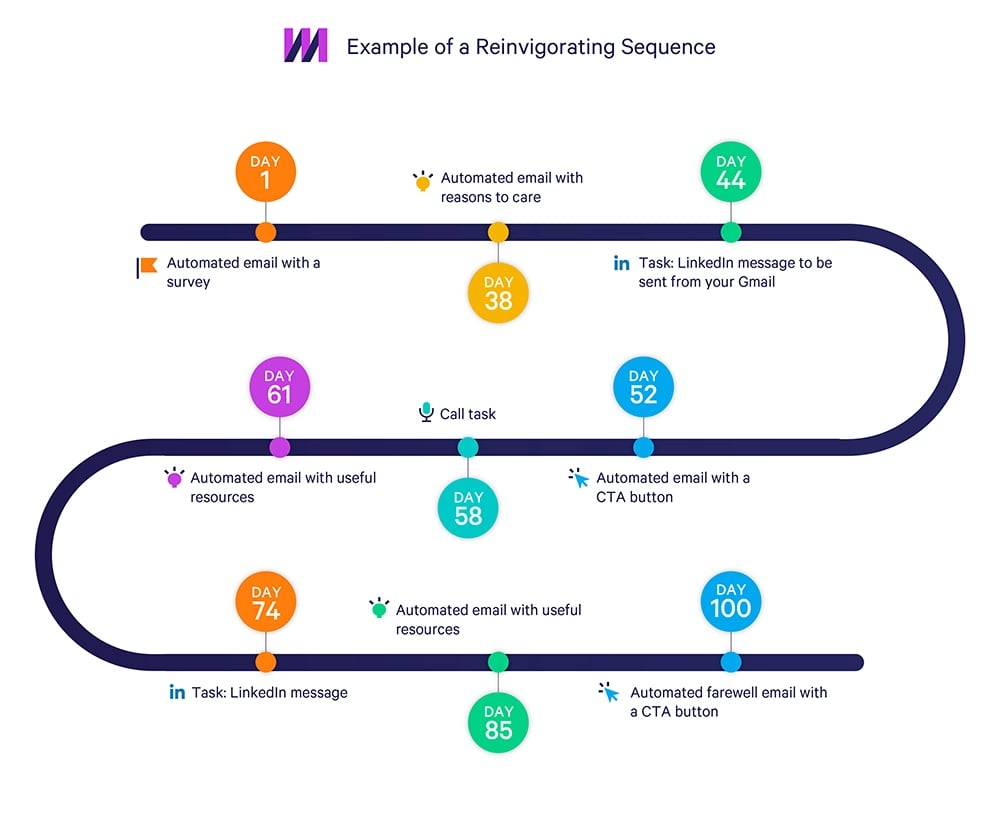
14. If we could do a better job than your current supplier and were cheaper, what would it take for you to work with us?
We're happy with the way things are
15. I get it, change is stressful. Even if there's plenty of upsides, would you still stick with [prospect’s current status quo]?
We're doing great in this area / We have that covered / We have everything we need
16. That’s great, how are you achieving that? I talk to a lot of [prospect’s role], and most struggle with [challenge/task/goal]. How did you do it specifically?
Flattery will get you everywhere, and probably reveal they aren’t doing as great as they’d like to make out.
17. Do you handle that internally or work with a 3rd party? Tell me more…
This isn’t a priority now
18. What would make it a priority?
19. I get that. What about [other quarter]? What would make it a priority then?
20. So what are your current priorities? If you walk me through them, maybe there’s a way I can help.
It’s too expensive / I don't see the potential for ROI
21. Our customers achieve [believable ROI] on average. What ROI would tempt you to try it out?
22. What kind of ROI are you looking for?
I'm not interested
23. What would it take to interest you?
Call me back in 3/6 months
24. No problem. What’s likely to have changed by then?
Send me an email
25. Is there anything specific you’d like me to include in that email?
26. Sure. Is there anyone else I should copy on that email who could find the information useful?
(gives you insights into their decision-making process and which stakeholders you need to target)
Related Post: 75 Sales Prospecting Email Subject Lines to Get More Responses
Questions to pique their interest/gather information
The idea with these questions is to do a bit of discovery and show them you understand their challenges to get them more interested in taking the meeting.
Note that the idea isn’t to ask all these questions in the first cold sales call. You don’t want to overwhelm them at this stage.
27. I know a lot of [companies in prospect’s industry] are using [common but ineffective solution] to manage [common challenge], or maybe a custom system. Is that what you're using, and what do you think of it?
This approach shows you understand their industry, and gives them an easy way to fess up to their challenges without seeming like they’re the only one who’s struggling.
28. We’ve heard about some common issues regarding [common task/problem]. Do these apply to your situation?
29. How are you managing [common task or challenge] today?
Booking a meeting
If you’ve managed to pique their interest, the next step is to get them on a meeting with your AE. Always try to schedule it during the call. If for some reason that doesn't work out, here's the second best option:
30. I’ve sent you over some calendar slots for you to choose from, and we have availability on [range of dates]. What works for you?
If you’re using Mixmax, it’s easy to share your availability in-email to reduce friction, either while you’re on the call or as part of follow up.

This is how sharing your availability in-email with Mixmax looks
Questions to understand decision-making and buying processes
These questions are designed to subtly find out whether the person you’re talking to has decision-making power or whether you need to target other stakeholders in the company when prospecting to enterprises.
31. I'll follow this call up with an email summary with some more information. I know this could be a big project, so should I include any information for anybody else?
Their answers should tell you who else is involved in the decision-making process, without forcing them to specify or give stakeholders’ names. So, if they ask for financials, you can be pretty sure their CFO will be looped in at some point.
32. Is there anyone else I should copy on follow-up emails?
33. Who else on your team may be important to loop in on the next call?
Discovery
If your SDR is successful in booking the next meeting, the AE will take over and ask more in-depth discovery questions to gather insights to tailor a demo.
34. What made you realize you needed [solution to problem]?
Gets them to open up about pain.
35. How urgent is [problem] and need for a solution?
Allows you to understand urgency and timelines.
36. How does it affect everyone on your team?
Allows you to understand how to position your solution at the team level.
37. What have you tried in the past to solve this?
38. What hasn’t worked in the past when trying to address it?
These two let you know what other solutions or methods they’re using.
39. How do you plan to try and address it in the future?
Lets you know whether there’s an opportunity for you here, and how you need to focus on educating them about your solution.
40. What’s your top priority for [common goal]?
41. What do you see as your biggest obstacle to achieving [goal]?
42. Can you tell me more about the challenges you face? Are they more time-focused or cost-related?
43. If you don’t find a solution today, where do you see your team in 6 months?
44. Why is [feature/service] interesting/important to you?
Well, we struggle with X, Y, Z, which is an issue because…
45. Oh no! What happens then?
It’s causing us X, Y, Z problems…
46. Ok, so [feature/function] is an issue. What would happen if you fix it?
These five questions allow you to dive deeper into pain and challenges. You can also get them to expand on specific points by asking:
47. Can you give me an example of that?
48. Walk me through your process for…
49. Which tools are you using for…
50. How are these challenges affecting the growth of your business?
Yields insights into how you can help at company level.
51. If you overcame these obstacles, what would that look like? An increase in revenue or a reduction in costs, etc.? How important to you is [common goal]?
52. Who is going to benefit most from a change in this area?
These answers to these three questions tell you what success looks like for them.
53. How did you get involved with [current responsibility/project]?
To find out more about their role in a specific area.
54. What kinds of resources can I send you to make this process easier?
55. What other questions can I answer for you now?
These last two are asked before wrapping up the conversation, to establish what else they need to know.
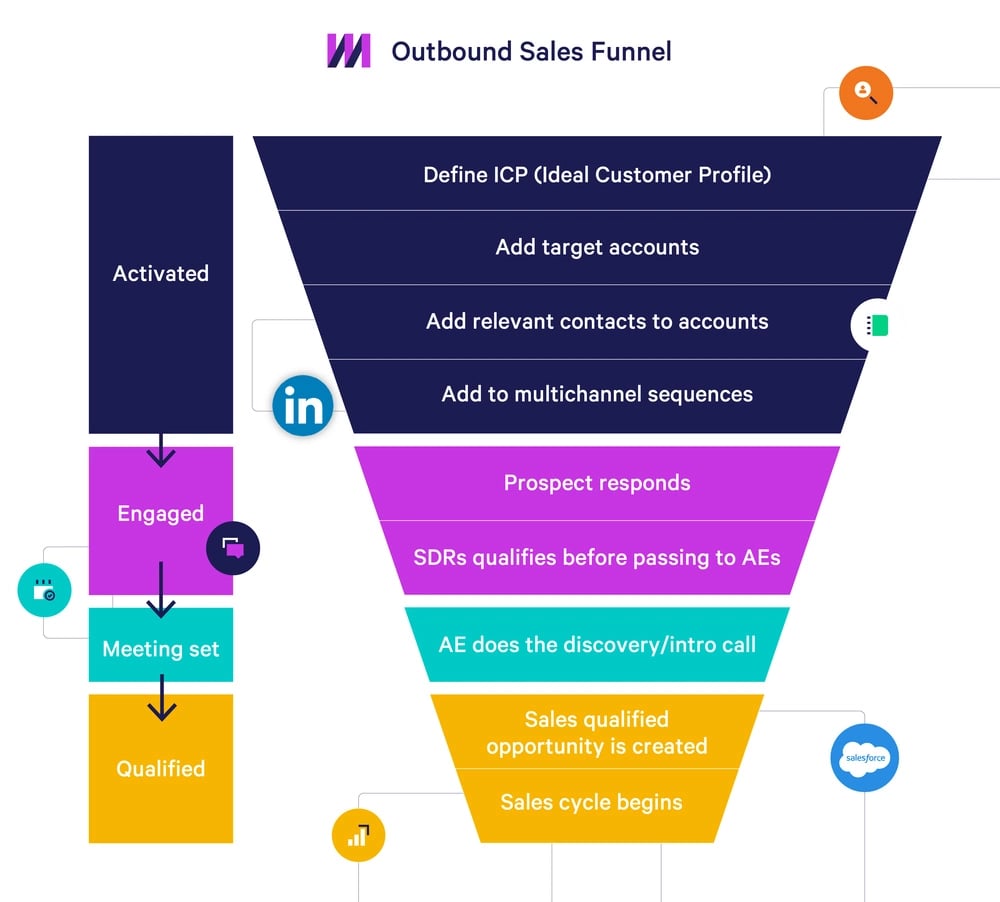
Related Post: Enterprise Sales Prospecting: 10 Strategies to Land Large Accoun
Sales prospecting questions best practices
Cold calling is hard, so it helps to be prepared and approach it with the right mindset. Here’s what sales professionals recommend.
Do your research and prepare in advance
Do your due diligence on prospects before you pick up the phone. Knowing who you’re calling, what they’re likely to struggle with, and how you could help, avoids wasting everyone’s time and helps you feel more confident on sales calls.
Block off time for cold calling and eliminate distractions. Set goals for prospecting time and each sales call, too, to help you stay on track to hit targets.
Visualize the outcomes you want, and do whatever you need beforehand–yoga, origami, time at the firing range, whatever–to get yourself in the right frame of mind before you pick up the phone.
This handy checklist from Kyle Coleman will help you prepare for cold calling:
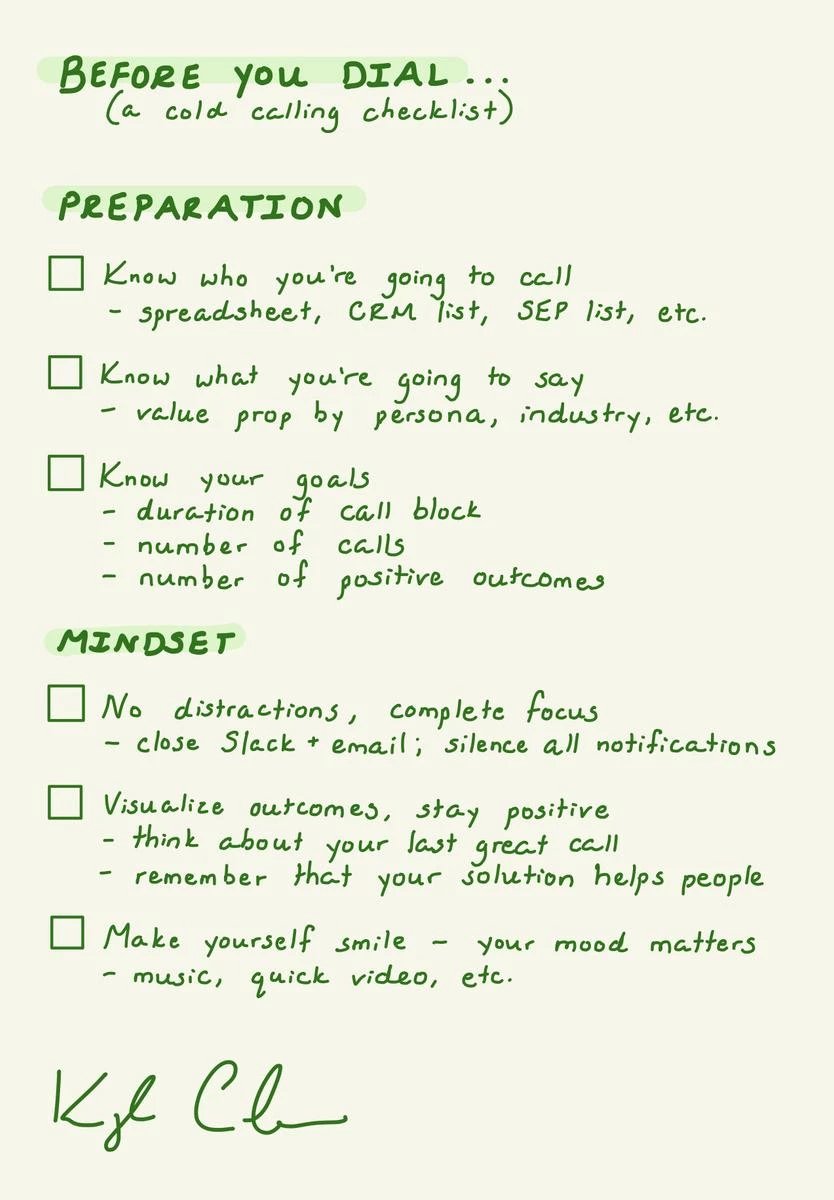
Set an agenda and use a script
Knowing what you’re going to say and having a structure to sales calls puts you in the driving seat and helps guide the prospect through different stages of the sales cycle. Asking open-ended sales questions encourages prospects to talk, but you don’t want the conversation to get out of control or for too many pains to surface in the initial conversation.
Of course, you need to be prepared to deviate a bit from your cold calling scripts if something interesting comes up. And make sure you never sound like you’re reading from a script. People interact enough with bots without you doing your best impression of one too.
Use pattern interruption
Asking open-ended questions that challenge them, force them, and keep them on the line is part of this. Other techniques include using humor, self-deprecation, mirroring, and empathy, all of which helps avoid the knee-jerk “not interested” reaction years of unwelcome cold callers have conditioned them into.
Listen more than you talk
As well as building trust, aiming for an 80-20 listen-to-talk ratio, as recommended by Justin Michael, allows pain and objections to unravel so you can gauge their full extent. It also flips the usual cold-call dynamic on its head instead of you trying to shut them down at the first opportunity so you can pitch, which prospects should respond positively to.
Automate wherever possible
There’s a lot to keep on top of, so use a sales engagement platform like Mixmax to automate manual or repetitive tasks and boost your productivity and efficiency.
The one-click in-email and Chrome extension dialers allow you to call numbers in your CRM or on any website from your Gmail inbox or Salesforce. A real time sync and automatic activity logging also eliminate busywork and makes your CRM a source of truth. And for supercharged prospecting, there’s Beast Mode, which lets you create triggers for automatic tasks like sending follow-up emails and collateral, updating Slack, and assigning tasks.
Integrations with popular sales prospecting tools like Dialpad also take the grunt work out of finding and dialing numbers, recording conversations, and getting real-time coaching and post-call insights to improve your cold calling.
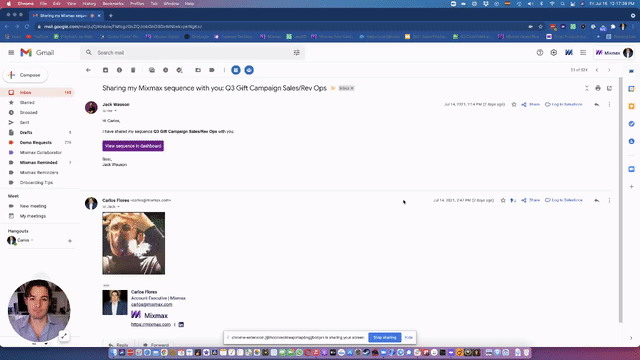
Cold calls are most effective when carried out as part of multi-channel sequences, which can easily be personalized by stages, content, and sending schedules for each recipient based on personalization triggers assigned by you.
Sales prospecting email templates that auto-fill with prospect data from your CRM also makes it easy to personalize outreach at scale, while real-time engagement alerts allow you to follow up when top of mind.
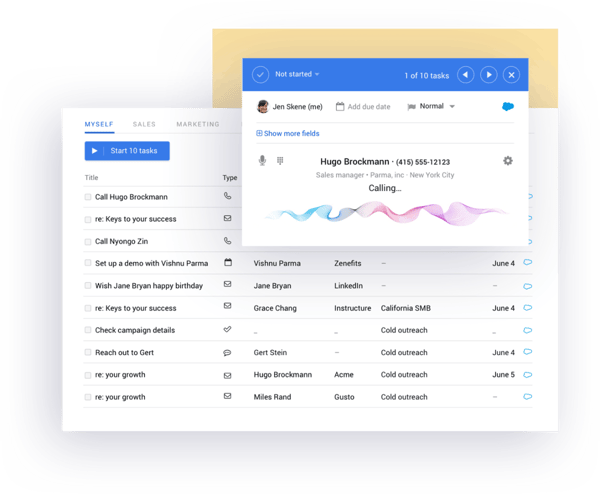
Mixmax Task Manager
| Want better results from your cold calling? Use Mixmax to increase your reps’ productivity and achieve pipeline success. See how it works. |
No, you hang up
For a sales prospecting method that’s been pronounced dead more times than we can count, cold calling seems to be hanging in there pretty well. And if you’re the lucky sales rep hitting the phones today, these open-ended sales prospecting questions will stand you in good stead when it comes to getting prospects talking.
Remember, though, it’s not just SDRs who need to hone their cold calling skills. Experts like Florin Tatulea recommend everyone from SDRs to sales managers take a turn at the cold call coalface from time to time. Leading by example and practicing what you preach will, he says, help motivate your team to go into battle under your leadership, and give you a better understanding of your prospects, workflows, and sales processes.
Whoever’s on your end of the line today, Mixmax has their back. We’re here to help streamline sales processes, from prospecting to sealing the deal and beyond, for busy sales teams in fast-growing companies using Gmail and Salesforce.
Thanks for insights and inspiration to:
Justin Michael
Jason Bay
Kyle Coleman
Florin Tatulea
Callum Beecroft
Josh Roth
Daniel Kleinowski


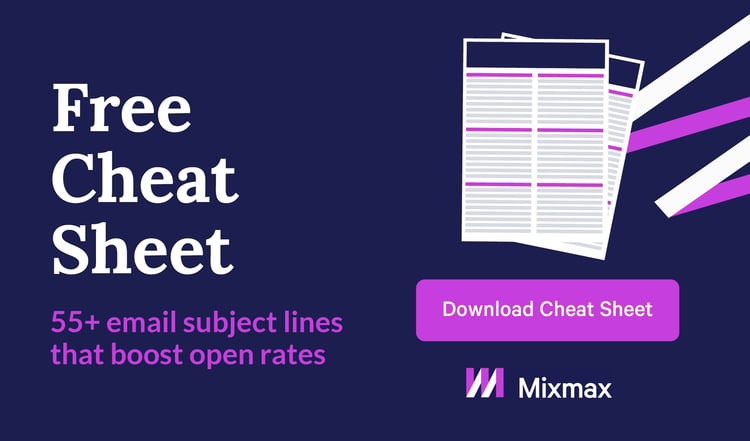

.png?width=450&height=250&name=Episode%20Graphic%20(1).png)
